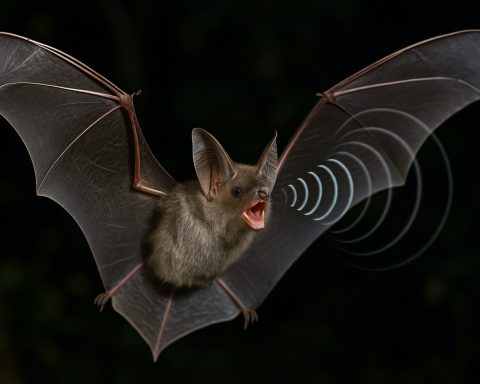- The U.S. has approved a $5.58 billion deal to provide F-16 Block 70/72 fighter jets to the Philippines, enhancing its defense capabilities.
- The agreement includes 20 modern F-16 aircraft equipped with advanced radar systems and weaponry, such as the AN/APG-83 AESA radar, AIM-120C-8 AMRAAMs, and AIM-9X Block II Sidewinders.
- This arms package positions the Philippines to reinforce its defense stance in the South China Sea, providing a strategic deterrent against regional threats.
- The Philippines faces challenges in integrating these jets, requiring infrastructure upgrades and skilled personnel training, supported by the deal’s logistics.
- The partnership highlights Washington and Manila’s commitment to shared security and proactive strategies in the Pacific region.
- There is an ongoing debate in the Philippines regarding the balance between military investment and addressing domestic needs.
A ripple of action surged through the Pacific skies as the U.S. State Department sanctioned a monumental $5.58 billion deal to deliver F-16 fighter jets to the Philippines. This pivotal military agreement signals a new era for the Southeast Asian archipelago, with 20 cutting-edge F-16 Block 70/72 aircraft reimagining its air force’s capabilities. Complete with a robust arsenal and advanced support systems, this delivery promises to bolster a vital ally’s defense capabilities against growing regional tensions.
The roar of the F-16 Fighting Falcon is legendary, echoing across air force bases worldwide since its inception in the 1970s. The Block 70/72 variant reflects decades of evolution, embodying the epitome of modern aerial warfare with its advanced electronics and weaponry. Central to its capabilities is the AN/APG-83 Active Electronically Scanned Array radar, offering pilots unmatched situational awareness. This technology, akin to that found in fifth-generation fighters, allows detection and engagement of distant threats with precision.
But it’s not just the radar that sets these aircraft apart; it’s the full suite of weaponry included in the deal. With over a hundred AIM-120C-8 AMRAAMs and 40 AIM-9X Block II Sidewinders, the Philippine Air Force is poised to safeguard its expansive domain, deterring incursions with state-of-the-art agility and firepower. On the ground, the precise GBU-39/B Small Diameter Bombs redefine tactical engagements, offering the lethality to strike with devastating accuracy yet minimal collateral impact.
As the South China Sea remains a volatile flashpoint, with strategic maneuvers by various regional powers, the influx of F-16s empowers the Philippines to assert its defense more robustly. The advanced radar systems could monitor the contested waters, ready to react to any undue advance from foreign vessels or aircraft. By enhancing maritime patrols and providing real-time information, the Jets aren’t just a military asset—they are a strategic deterrent to any potential disruptors in the region.
The immediate challenges lie in the assimilation process. The Philippines must rapidly adapt its infrastructure, training pilots and crews to operationalize these sophisticated jets, a task meticulously woven into the broader logistics package of the deal. Simulators, spare parts, and expert assistance are just the beginning of an endeavor that redefines the Philippine military landscape.
An intriguing aspect of this agreement is the juxtaposition of advancing military capabilities with social considerations. Critics in Manila have voiced concerns over whether this substantial investment diverts crucial resources from domestic priorities. Yet, the proponents argue that in a world where sovereignty is perpetually tested, the ability to defend one’s skies cannot come at a premium.
This strategic partnership between Washington and Manila underscores a shifting focus in the Pacific theater, pivoting from reactive measures to proactive strategies. It’s a testament to the enduring relationship fostered through shared interests and common security objectives, poised to reshape regional dynamics.
As the F-16 jets fly towards the Philippines, they carry more than advanced weaponry—they symbolize a fortified alliance, assurance in shared security, and a tactical advantage in an ever-complex geopolitical environment.
What the $5.58 Billion F-16 Deal Means for the Philippines and Regional Stability
Comprehensive Analysis of the F-16 Block 70/72 Deal
The approved deal between the U.S. and the Philippines for the acquisition of F-16 Block 70/72 jets marks a transformative step in the Philippines’ military capabilities. This article delves deeper into the nuances of this agreement and its wider implications.
Advanced Features of the F-16 Block 70/72
The F-16 Block 70/72 jets feature cutting-edge enhancements such as:
– AN/APG-83 AESA Radar: This radar offers refined tracking capabilities, better engagement zones, and enhanced resistance to electronic warfare.
– Enhanced Weapons Suite: The inclusion of AIM-120C-8 AMRAAMs and AIM-9X Block II Sidewinders boosts air-to-air combat proficiency.
– GBU-39/B Small Diameter Bombs: These bombs ensure precision strikes, minimizing civilian casualties and collateral damage.
Strategic Importance of the Deal
Regional Tensions in the South China Sea
As regional tensions, particularly in the South China Sea, continue to simmer, the enhancement of the Philippines’ air defense serves as both a deterrence and a stabilizing force. F-16 Block 70/72 jets enable better surveillance and control over territorial waters, providing a strategic advantage against potential aggressors.
Training and Assimilation
The purchase agreement includes extensive logistical support to train pilots and maintain ground operations. The availability of flight simulators and maintenance protocols ensures a smooth transition and integration of these jets into the existing fleet.
Economic and Social Implications
While the deal is a major step forward for national defense, it does raise questions about resource allocation. Critics argue that such a substantial investment might overshadow pressing domestic needs. However, proponents emphasize that robust defense is vital for ensuring long-term stability and economic growth.
Real-World Use Cases and Future Considerations
Deterrence and Border Protection
These jets can effectively serve as a deterrent against unlawful incursions, ensuring not just territorial integrity but also safeguarding economic interests tied to maritime resources.
Collaborative Operations
Beyond immediate defense needs, the aircraft enable closer operational synergy with U.S. forces, enhancing readiness for joint exercises and strategic missions in the Pacific region.
Pros and Cons Overview
Pros
– Enhanced defensive capabilities.
– Improved tactical and strategic military reach.
– Encouraged partnership with the U.S., aligning with broader geopolitical strategies.
Cons
– High costs may impact other financial priorities.
– Necessity for expedited and comprehensive pilot training.
– Potential diplomatic ramifications with neighboring countries.
Actionable Recommendations
1. Enhance Training Programs: Accelerate training of pilots and ground crew to maximize the capabilities of the F-16s.
2. Infrastructure Development: Invest in necessary infrastructure upgrades at airbases to support the new technologies.
3. Public Engagement: Engage with local communities to showcase the importance of this defense modernization and address public resource allocation concerns.
Future Outlook and Market Trends
In the context of escalating regional power plays, this deal signifies a strategic pivot toward modernized defense capabilities. Market forecasts for fighter aircraft in Southeast Asia indicate growing investments in military technology as nations respond to complex security environments.
For further insights into geopolitical trends and defense strategies, visit the U.S. Department of State or explore industry insights from Lockheed Martin.
Through strategic defense investments and robust training initiatives, the Philippines can leverage this monumental deal to ensure national security and contribute to regional stability.







